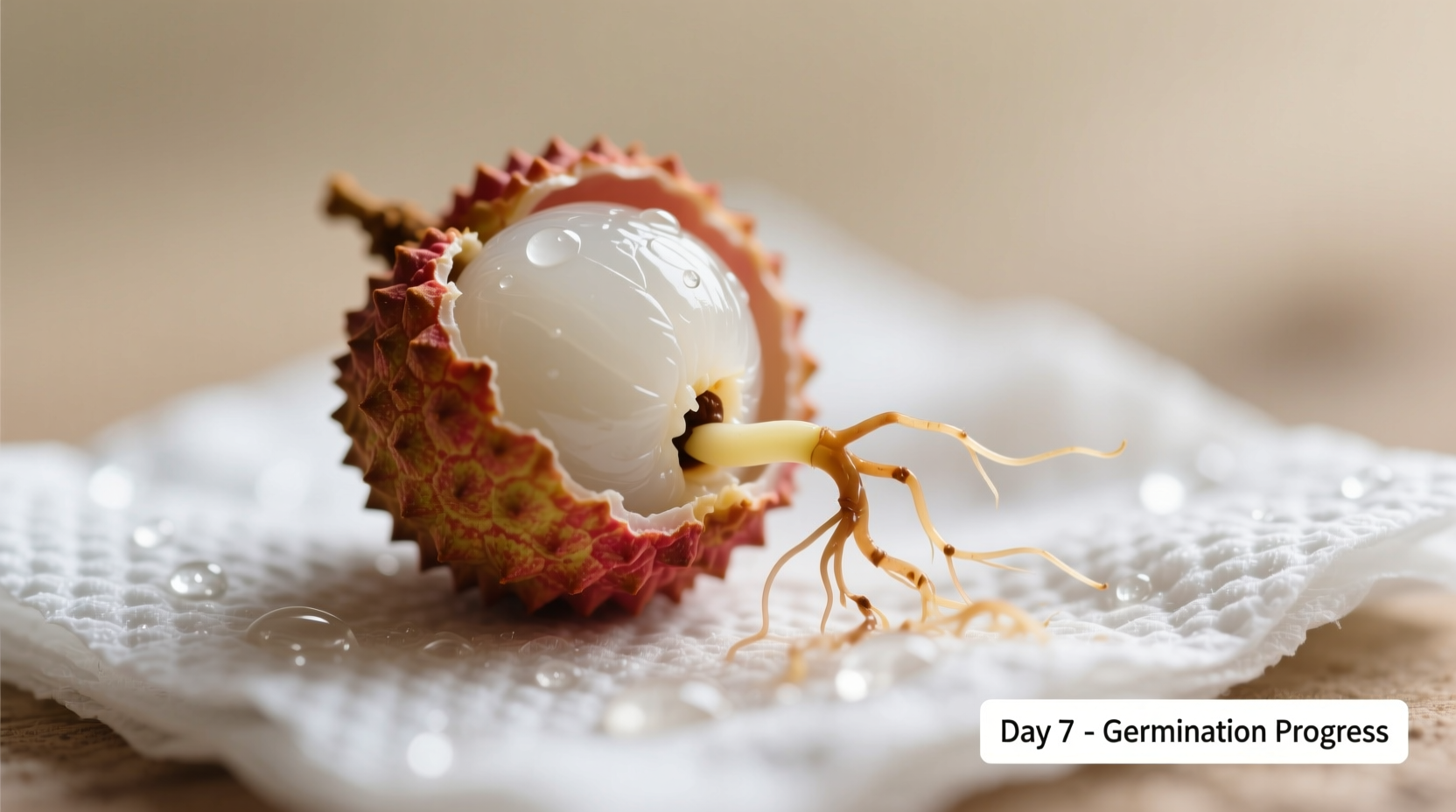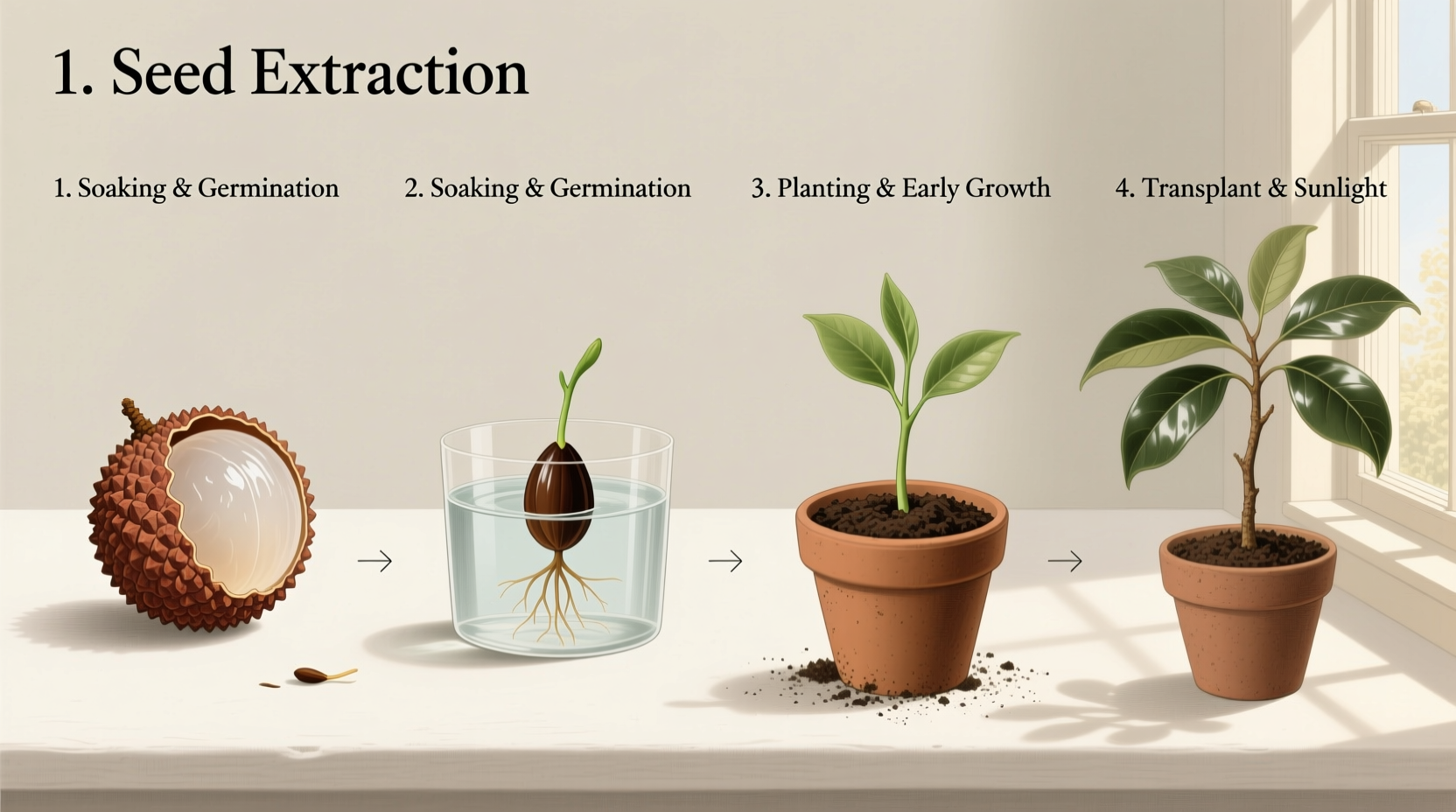Yes, you can successfully grow lychee from seed with proper technique. Fresh seeds germinate in 1-4 weeks when kept at 77-95°F (25-35°C) in moist, well-draining soil. Expect your tree to reach fruiting maturity in 3-5 years with consistent care, though grafted trees produce fruit faster. The key steps include selecting viable seeds, proper preparation, maintaining ideal germination conditions, and providing appropriate long-term care.
Have you ever savored the sweet, floral flavor of fresh lychee and wondered if you could grow your own tree? While commercial growers typically use grafting for faster fruiting, growing lychee from seed is a rewarding project for home gardeners. This comprehensive guide walks you through the entire process with science-backed techniques that maximize your success rate.
Why Grow Lychee from Seed: Benefits and Realistic Expectations
Before diving into the process, understand what growing from seed offers versus grafted trees. Seed-grown lychees develop stronger root systems but take longer to fruit—typically 3-5 years compared to 1-3 years for grafted varieties. The genetic diversity means your tree might produce fruit slightly different from the parent, which can be exciting for hobbyists.
According to the University of Florida's Institute of Food and Agricultural Sciences, "Lychee trees grown from seed can reach heights of 30-40 feet in ideal conditions, making them suitable for larger gardens in tropical and subtropical climates." This growth potential requires proper planning for your space.
Step 1: Selecting and Preparing Your Lychee Seed
The foundation of successful germination starts with seed selection. Follow these critical steps:
- Choose fresh seeds from ripe, high-quality fruit (within 24-48 hours of eating)
- Remove all fruit residue by gently scrubbing under running water
- Test viability by placing seeds in water—those that sink are typically viable
- Plant immediately as lychee seeds lose viability quickly when dried
Avoid letting seeds dry out, as research from the California Rare Fruit Growers Association shows lychee seeds maintain 85-90% germination rates when planted fresh but drop to under 20% after just 7 days of drying.
Step 2: Germination Process for Maximum Success
Proper germination technique dramatically increases your chances of success:
- Wrap seeds in damp paper towels or sphagnum moss
- Place in a sealed plastic bag at 86°F (30°C)
- Check daily for sprouting (typically 1-4 weeks)
- Transplant when root is 1-2 inches long
Temperature control is critical—lychee seeds germinate best between 77-95°F (25-35°C). Below 70°F (21°C), germination slows significantly. This temperature sensitivity explains why lychee thrives in USDA zones 10-11 but struggles in cooler climates.

Step 3: Planting Your Sprouted Seed
Once your seed has sprouted, proper planting ensures healthy development:
- Use a 6-8 inch pot with drainage holes
- Fill with acidic, well-draining mix (5.0-5.5 pH)
- Plant with root pointing down, just below soil surface
- Water thoroughly but avoid waterlogging
| Soil Component | Percentage | Purpose |
|---|---|---|
| Pine bark fines | 40% | Acidity and structure |
| Perlite | 30% | Drainage improvement |
| Coco coir | 20% | Moisture retention |
| Compost | 10% | Nutrient supply |
Step 4: Essential Care for Young Lychee Trees
During the first year, focus on these critical care elements:
Light Requirements
Provide 6-8 hours of filtered sunlight daily. Direct afternoon sun can scorch young leaves. An east-facing window or shaded outdoor location works best.
Watering Schedule
Maintain consistent moisture without saturation:
- Water when top inch of soil feels dry
- Increase frequency during hot months
- Reduce watering in winter dormancy
- Use room-temperature water to avoid shock
Nutrient Management
Begin fertilizing at 3 months with balanced, slow-release formula:
- Use 10-10-10 NPK fertilizer at half strength
- Apply monthly during growing season
- Increase potassium as tree matures
- Avoid high-phosphorus formulas
Step 5: Long-Term Growth and Fruit Production Timeline
Understanding the growth stages helps set realistic expectations:
Months 1-6: Seedling establishment - focus on root development
Months 6-18: Vegetative growth - regular pruning to shape tree
Years 2-3: Mature tree structure - begins flowering potential
Years 3-5: First fruit production - yields increase annually
Remember that environmental factors significantly impact this timeline. Trees in optimal conditions (consistent warmth, proper humidity, and adequate sunlight) typically fruit at the earlier end of this range.
Common Challenges and Solutions
Be prepared for these typical issues when growing lychee from seed:
Slow or Failed Germination
Cause: Old or dried seeds
Solution: Always use fresh seeds and maintain consistent moisture during germination
Leaf Drop or Yellowing
Cause: Incorrect soil pH or overwatering
Solution: Test soil pH monthly and adjust to 5.0-5.5 range with sulfur or peat moss
No Flowering After Maturity
Cause: Insufficient chill hours or improper nutrition
Solution: Provide 100-200 hours below 68°F (20°C) in winter and increase potassium
When to Consider Grafting
If you want fruit sooner, consider grafting after your seedling reaches pencil thickness (usually at 1-2 years). The University of Hawaii Cooperative Extension notes that "grafted lychee trees typically produce fruit within 1-3 years, compared to 3-5 years for seed-grown trees." This advanced technique requires practice but significantly reduces waiting time for harvest.
Final Thoughts for Successful Lychee Growing
Growing lychee from seed requires patience but offers immense satisfaction. By following these science-based techniques, you'll maximize your chances of cultivating a healthy, fruit-bearing tree. Remember that each stage—from seed selection to fruiting—requires specific care tailored to lychee's tropical nature. With proper attention to temperature, moisture, and soil conditions, you'll be harvesting your own homegrown lychees in just a few years.











 浙公网安备
33010002000092号
浙公网安备
33010002000092号 浙B2-20120091-4
浙B2-20120091-4